-
-
Accédez au logiciel étudiant gratuit
Ansys donne les moyens à la prochaine génération d'ingénieurs
Les étudiants ont accès gratuitement à un logiciel de simulation de classe mondiale.
-
Connectez-vous avec Ansys maintenant !
Concevez votre avenir
Connectez-vous à Ansys pour découvrir comment la simulation peut alimenter votre prochaine percée.
Pays et régions
Espace client
Support
Communautés partenaires
Contacter le service commercial
Pour les États-Unis et le Canada
S'inscrire
Essais gratuits
Produits & Services
Apprendre
À propos d'Ansys
Back
Produits & Services
Back
Apprendre
Ansys donne les moyens à la prochaine génération d'ingénieurs
Les étudiants ont accès gratuitement à un logiciel de simulation de classe mondiale.
Back
À propos d'Ansys
Concevez votre avenir
Connectez-vous à Ansys pour découvrir comment la simulation peut alimenter votre prochaine percée.
Espace client
Support
Communautés partenaires
Contacter le service commercial
Pour les États-Unis et le Canada
S'inscrire
Essais gratuits
ANSYS BLOG
March 7, 2023
Modeling a Different Solar System in Ansys Systems Tool Kit
Can you model a solar system other than ours using Ansys Systems Tool Kit (STK)? We were wondering just that after reading more about the Trappist-1 system.
Trappist-1 was first discovered in 1999 by John Gizis, a professor of physics and astronomy at the University of Delaware. Trappist-1 is an ultra-cool red dwarf, with 9% the mass of our Sun and a diameter slightly larger than Jupiter. It is approximately 40 light years from Earth. It got its name in 2016 from researchers using the European Southern Observatories’ Transiting Planets and Planetimals Small Telescope (TRAPPIST) in Chile. They found that it was being orbited by three roughly Earth-sized planets. In 2017, four more planets were discovered by the Spitzer Space Telescope and the European Southern Observatory, bringing the total to seven.
The naming convention for this solar system calls the main star object “A,” while its planets are named alphabetically in increasing distance order from the star (i.e., “B” through “H”, with “B” being the closest). The distances from the planets to their star are significantly closer than in our solar system, and even the outermost planet orbits its star closer than Mercury orbits our Sun.
| Planet Name | Distance to star (AU: avg Earth-Sun dist.) | Radius (in Earth radii) |
| Trappist-1B | 0.01154 | 0.06189 |
| Trappist-1C | 0.01580 | 1.097 |
| Trappist-1D | 0.02227 | 0.778 |
| Trappist-1E | 0.02925 | 0.920 |
| Trappist-1F | 0.03849 | 1.045 |
| Trappist-1G | 0.04683 | 1.129 |
| Trappist-1H | 0.06189 | 0.775 |
Although tidally locked, three of the planets are within the habitable zone — the area around a star most likely to have liquid water. This discovery sets a new record for greatest number of habitable-zone planets found around a single star outside of our solar system, according to NASA.
While they are within this goldilocks zone that could result in a moderate temperature, spectroscopic surveys by the Hubble space telescope have so far been unable to collect definitive evidence of whether these planets have an atmosphere or not.1
Modeling With STK, Easy-Peasy
While STK was originally designed for our solar system, modeling the Trappist-1 planetary system is fairly straightforward. STK likes having a central body named Sun, so instead of arguing with STK, we renamed Trappist-1A to Sun and changed all the properties of our default Sun to that of the new central star. Adding the planets works no differently from adding a new planet object in our solar system, with the exception of the parent body being Trappist-1A.
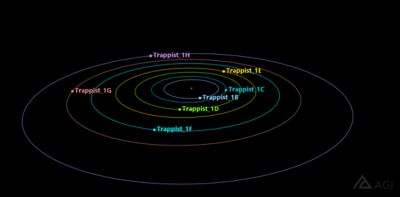
Figure 1. The Trappist-1 solar system modeled in Ansys STK.
What Would This Star Look Like in the Sky?
Because all of Trappist-1A’s planets fit inside the orbit of Mercury, it became popular to believe that the star would appear extremely large in the sky of its planets. As it turns out, these depictions were highly exaggerated.
Starting with simple trigonometry using known distances and diameters, we can compute a comparison to our Sun in Earth’s sky.
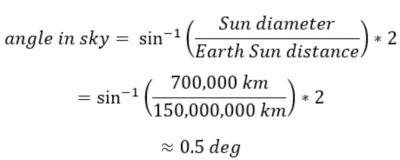
So, our Sun takes up about 0.5 degrees in Earth’s sky.
Repeating the above equation with the appropriate values for the view from Trappist-1A to Trappist 1-D give us 2.9 degrees, or more than 5 times the size of our Sun as it appears in our sky.

Going one planet closer and setting the view from somewhere on Trappist-1C toward its star in STK gives us this answer.
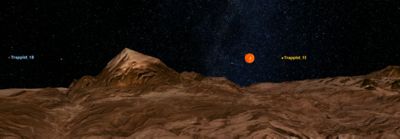
Figure 2. The view of Trappist-1A, Trappist-1B, and Trappist-1E from Trappist-1C in Ansys STK.
As a comparison, here is a similar view of our Sun from an Ansys office using the same field of view.
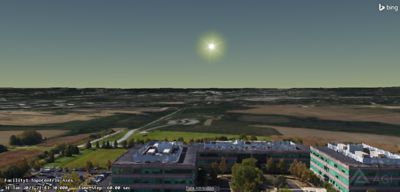
Figure 3. The view of our Sun from the Ansys Exton office.
Just to increase the size as much as possible, let’s take a view at what Trappist-1A would look like from the surface of Trappist-1B, the innermost planet. Repeating the above equations gives us quite a large 5.5 degrees.

Modeling this in STK gives us this:
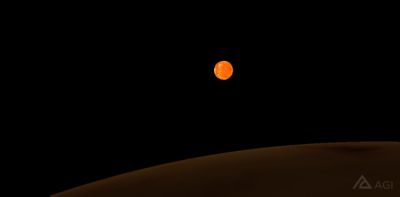
Figure 4. The view of Trappist-1A from Trappist-1B modeled in Ansys STK.
So, while the Trappist-1 solar system is just over 40 light years away (and we probably won’t be sending any spacecraft there in the near future), we can still model everything in STK and generate interesting results.
For more information about how Ansys Systems Tool Kit can help you, visit our missions page.
References
- “Spectra of planets in Trappist-1 system.” European Space Agency/Hubble, February 5, 2018.